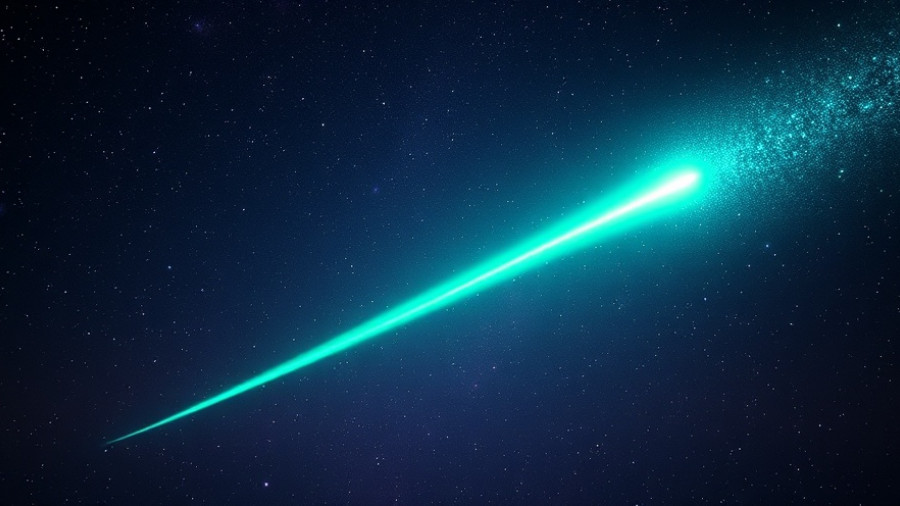
Comet Lemmon: A Spectacle in the Night Sky
As autumn descends and the skies begin to clear, a rare astronomical event has captured the attention of stargazers around the world: the appearance of Comet C/2025 A6, also known as Comet Lemmon. This dazzling comet, which first graced our telescopes in January 2025, is now visible to the naked eye in dark-sky locations, its ghostly tail leaving a trail of excitement among amateur astronomers and photography enthusiasts alike.
Historical Context: A Journey Through Time
Comet Lemmon is not just another space rock; it has a storied past that stretches over a millennium. Having last traversed Earth's vicinity around the early Middle Ages, it won't return for nearly 1,150 years. Discovered through the Mount Lemmon Survey, this non-periodic comet provides a glimpse into our solar system's history, showcasing the remnants from its formation over 4.6 billion years ago. Each observation of its green glow and tail, created through sublimation of icy materials, connects us to the ancient cosmos.
How to View Comet Lemmon: Tips for Stargazers
For those eager to witness this celestial phenomenon, timing and location are critical. As of mid-October, Comet Lemmon reached a brightness of approximately +4.9, making it visible to the naked eye under optimal conditions. The best viewing opportunity occurs around October 21, during its closest approach to Earth. Ideally, one should head to rural locations with minimal light pollution and strong binoculars or a telescope to appreciate its full glory. Additionally, apps like Star Walk 2 or Stellarium can help pinpoint its position in the sky.
Chasing the Comet: The Art of Astrophotography
Capturing Comet Lemmon on camera can be both a challenge and a rewarding experience. Award-winning astrophotographer Josh Dury faced challenging weather conditions while shooting the comet over Somerset, UK. Using a Sony A7S III and Sigma 135mm F/1.4 lens, Dury overcame haze and high winds to present a breathtaking image of the comet's bright green coma and long, diffuse tail. For those interested in photography, investing in a high-quality camera and understanding the basics of night photography can enhance the capturing experience. Practical insights from resources like Dury's book, '52 Assignments: Night Photography,' offer invaluable tips for budding astrophotographers.
Future Predictions: What Lies Ahead for Comet Lemmon
As this comet journeys toward the sun, it will undergo changes, brightening even further before gradually fading from our skies. After its close encounter with Earth on October 21, observers can expect it to diminish in visibility due to its distance and position. Though Lemmon will become fainter, it is poised to leave a lasting impact on the astronomy community, marking a once-in-a-lifetime viewing opportunity. The elliptical path of Comet Lemmon means its unpredictable behavior adds to the excitement of this cosmic event.
Conclusion: Seize the Moment!
This October, as Comet Lemmon dances across our night sky, it's a reminder of the beauty and mystery that our universe holds. Whether you're an experienced astronomer or a curious newcomer, take advantage of this fleeting opportunity to witness a celestial visitor that won’t return for centuries. From understanding its historical context to practical tips for viewing, engaging with Comet Lemmon connects us all to the universe’s vastness and wonder.
 Add Row
Add Row  Add
Add 




Write A Comment